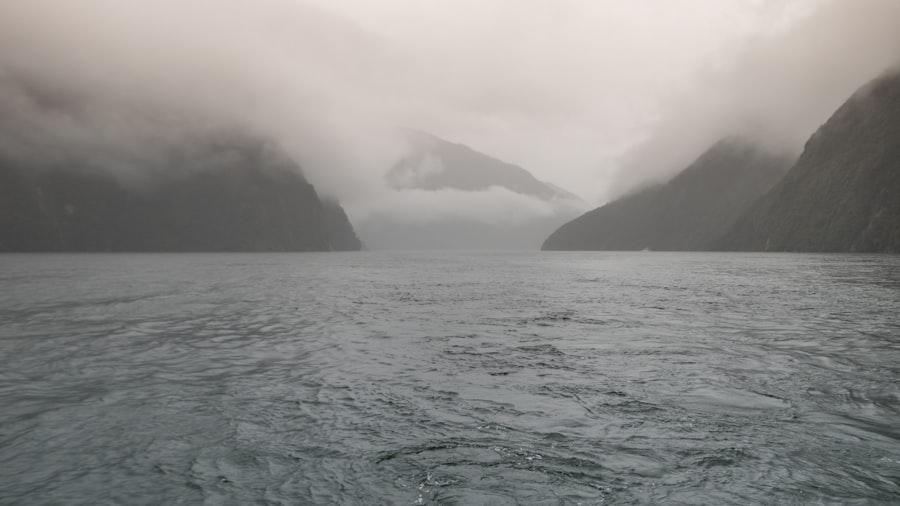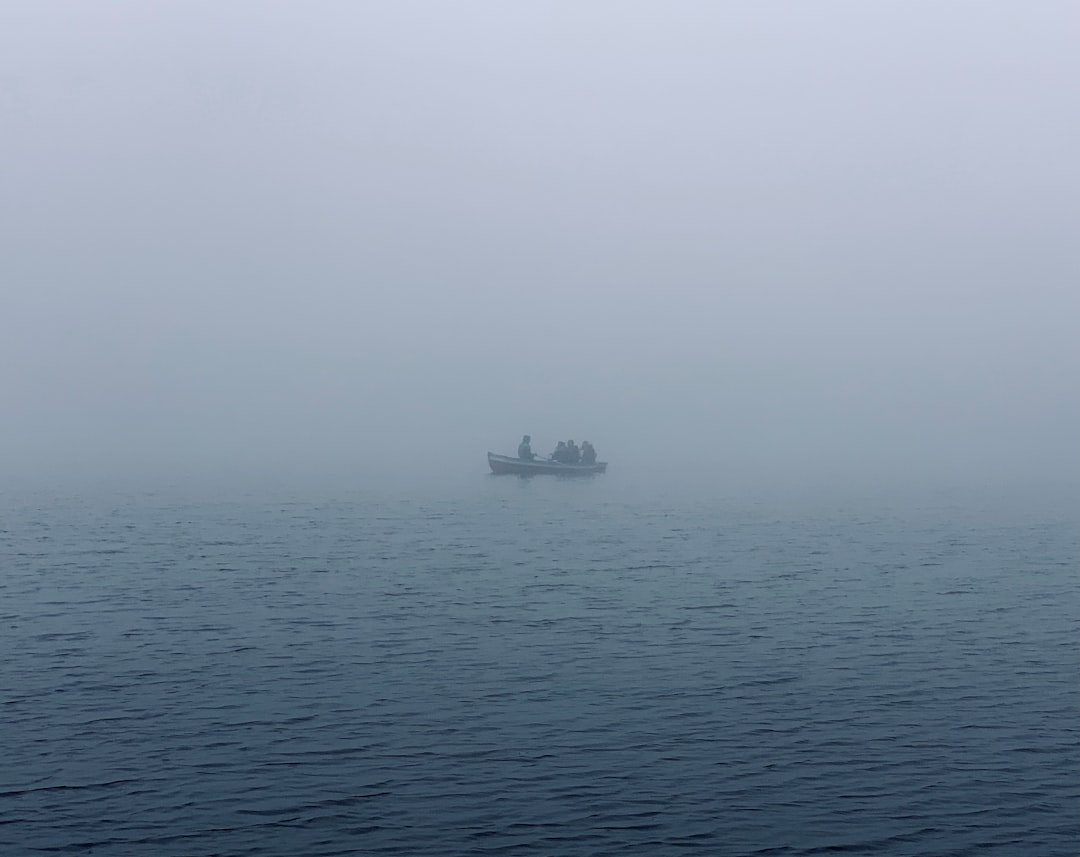The Drake Passage, a body of water that separates South America from Antarctica, serves as a crucial gateway for adventurers and researchers alike. Stretching approximately 600 miles, this passage is renowned for its tumultuous waters and unpredictable weather patterns. It is not merely a geographical feature; it represents the threshold to one of the most remote and pristine environments on Earth.
For those seeking to explore the icy landscapes of Antarctica, crossing the Drake Passage is often an essential part of the journey, offering a unique blend of excitement and challenge. As travelers embark on their voyages, they are met with the awe-inspiring sight of the Southern Ocean, where the Atlantic and Pacific Oceans converge. This confluence creates a rich marine ecosystem, teeming with life.
The passage is not only a route to the Antarctic continent but also a vital area for scientific research, particularly in understanding climate change and its effects on polar regions.
Key Takeaways
- The Drake Passage is the main route to reach Antarctica and is known for its challenging weather conditions.
- Navigating the Drake Passage in November can be particularly difficult due to strong winds and rough seas.
- Weather conditions in the Drake Passage during November can include high winds, low temperatures, and rough seas, making it a challenging journey.
- Safety precautions for crossing the Drake Passage in November include securing loose items, wearing appropriate clothing, and following the instructions of the crew.
- Wildlife encounters in the Drake Passage can include sightings of whales, dolphins, and various seabirds, adding to the unique experience of the journey.
The Challenges of Navigating the Drake Passage in November
November marks the beginning of the Antarctic summer, a time when many expeditions set sail for the icy continent. However, navigating the Drake Passage during this month presents its own set of challenges.
For many travelers, the Drake Passage is infamous for its rough seas, and November is no exception. The combination of strong currents and shifting weather can create conditions that test even the most seasoned mariners. Moreover, the psychological aspect of crossing the Drake Passage cannot be overlooked.
The anticipation of rough seas can induce anxiety in even the most adventurous souls. As waves crash against the hull and the ship rolls with the swell, passengers may find themselves grappling with feelings of unease. It is essential for travelers to prepare mentally for this journey, understanding that while challenges abound, they are part of the adventure that awaits them in Antarctica.
Weather Conditions in the Drake Passage during November

In November, weather conditions in the Drake Passage can be highly variable. As spring transitions into summer, temperatures begin to rise, but they can still fluctuate dramatically. Average temperatures range from just above freezing to mild conditions, depending on the specific location within the passage.
However, it is not uncommon for sudden cold fronts to sweep through, bringing with them strong winds and heavy precipitation. These rapid changes can create a challenging environment for navigation. The winds in the Drake Passage are notorious for their strength and unpredictability.
They can reach speeds of up to 50 knots or more, creating steep waves that can rise dramatically in a short period. This combination of wind and wave action can lead to rough seas that are daunting for even experienced sailors. Travelers should be prepared for these conditions by staying informed about weather forecasts and being ready to adapt their plans as necessary.
Safety Precautions for Crossing the Drake Passage in November
| Safety Precautions | Details |
|---|---|
| Weather Monitoring | Continuous monitoring of weather conditions to ensure safe crossing |
| Life Jackets | Mandatory wearing of life jackets during the crossing |
| Emergency Drills | Regular drills to prepare passengers for emergency situations |
| Experienced Crew | Highly trained crew with experience in navigating challenging waters |
| Communication Systems | Reliable communication systems for emergency coordination |
Given the challenges posed by the Drake Passage in November, safety precautions are paramount for anyone planning to make the crossing. First and foremost, choosing a reputable expedition company with experience navigating these waters is crucial. These companies often have well-trained crews who understand the intricacies of sailing in such unpredictable conditions.
They are equipped with advanced technology to monitor weather patterns and make informed decisions about when to set sail. Additionally, passengers should familiarize themselves with safety protocols before embarking on their journey. This includes understanding emergency procedures, knowing where life jackets are located, and participating in safety drills conducted by the crew.
It is also advisable for travelers to keep an eye on their personal belongings and secure them properly to prevent accidents during rough seas. By taking these precautions seriously, travelers can enhance their safety and enjoy their adventure with greater peace of mind.
Wildlife Encounters in the Drake Passage
One of the most rewarding aspects of crossing the Drake Passage is the opportunity to encounter diverse wildlife. This region is home to an array of marine life, including seals, whales, and various seabird species. As travelers navigate these waters, they may be fortunate enough to spot majestic humpback whales breaching or orcas gliding gracefully through the waves.
The sight of these magnificent creatures in their natural habitat adds an unforgettable dimension to the journey. Birdwatchers will also find delight in the avian population that inhabits the Drake Passage. Species such as albatrosses and petrels soar above the waves, often following ships for miles in search of food scraps.
These birds are not only fascinating to observe but also play a vital role in maintaining the ecological balance of this marine environment. For many travelers, these wildlife encounters become cherished memories that highlight the beauty and fragility of life in polar regions.
Tips for Handling Seasickness during the Crossing

Seasickness is a common concern for many travelers embarking on a journey through the Drake Passage. The combination of rolling waves and unpredictable weather can lead to discomfort for even those who typically do not experience motion sickness. To mitigate these effects, there are several strategies that travelers can employ.
First and foremost, it is advisable to choose a cabin located in the middle of the ship, where motion is felt less intensely. Additionally, over-the-counter medications designed to prevent seasickness can be beneficial. Travelers should consult with their healthcare provider before their trip to determine which options are best suited for them.
Natural remedies such as ginger or acupressure wristbands may also provide relief for some individuals. Staying hydrated and consuming light meals can further help alleviate symptoms during rough crossings.
Choosing the Right Vessel for a November Crossing
Selecting the right vessel is crucial for a successful crossing of the Drake Passage in November. Different types of ships offer varying levels of comfort and stability, which can significantly impact the overall experience. Expedition vessels designed specifically for polar travel often feature reinforced hulls and advanced stabilization technology to handle rough seas more effectively.
These ships typically provide amenities that enhance passenger comfort during challenging conditions. Travelers should also consider factors such as passenger capacity and onboard services when choosing a vessel. Smaller ships may offer a more intimate experience with personalized service, while larger vessels might provide additional amenities such as restaurants and entertainment options.
Ultimately, selecting a ship that aligns with individual preferences and comfort levels will contribute to a more enjoyable journey through this iconic passage.
What to Pack for a November Journey through the Drake Passage
Packing appropriately for a journey through the Drake Passage in November is essential for ensuring comfort and safety during the crossing. Given the unpredictable weather conditions, layering clothing is key. Travelers should pack moisture-wicking base layers, insulating mid-layers, and waterproof outer layers to protect against wind and rain.
Sturdy footwear is also important for navigating wet decks and uneven surfaces on board. In addition to clothing, travelers should consider packing essential items such as sunscreen, sunglasses, and a good camera to capture breathtaking views and wildlife encounters. Binoculars can enhance wildlife watching experiences while a reusable water bottle will help keep hydration levels up during long days at sea.
By preparing thoughtfully and packing wisely, travelers can ensure they are ready for whatever challenges may arise during their adventure.
Historical Significance of the Drake Passage
The historical significance of the Drake Passage extends far beyond its geographical boundaries; it has played a pivotal role in maritime exploration and scientific discovery. Named after Sir Francis Drake, who navigated these waters in the late 16th century, this passage has been a critical route for explorers seeking new trade routes and territories. Its treacherous waters have challenged countless sailors throughout history, making it a symbol of human resilience against nature’s formidable forces.
In addition to its exploration history, the Drake Passage has become increasingly important in contemporary discussions about climate change and environmental conservation. Scientists study this region to understand its role in global ocean currents and its impact on climate patterns worldwide. As awareness grows about environmental issues facing polar regions, the Drake Passage stands as both a historical landmark and a focal point for ongoing research efforts aimed at preserving our planet’s delicate ecosystems.
Alternative Routes to Avoid the Drake Passage in November
For those who may be hesitant about crossing the notoriously rough waters of the Drake Passage in November, alternative routes do exist. Some expedition companies offer itineraries that bypass this passage altogether by utilizing air travel or different maritime routes that skirt around it. While these alternatives may provide smoother sailing experiences, they often come with trade-offs regarding access to certain destinations within Antarctica.
Travelers considering alternative routes should weigh their options carefully based on their priorities—whether it be comfort during transit or maximizing their time spent exploring Antarctica’s unique landscapes and wildlife. Ultimately, each route offers its own set of advantages and challenges that should be considered when planning an Antarctic adventure.
The Rewards of Navigating the Drake Passage in November
Despite its challenges, navigating the Drake Passage in November offers unparalleled rewards for those willing to embrace its unpredictability. The thrill of crossing this iconic body of water serves as an initiation into one of Earth’s last frontiers—the majestic landscapes of Antarctica await on the other side. For many adventurers, this journey becomes a rite of passage that deepens their appreciation for nature’s raw beauty.
Moreover, successfully traversing the Drake Passage fosters a sense of camaraderie among fellow travelers who share in this unique experience. The stories exchanged during rough seas often become cherished memories that bond individuals together long after their journey has ended. Ultimately, while navigating this passage may present challenges, it also opens doors to extraordinary adventures that leave lasting impressions on all who dare to cross it.
The Drake Passage, known for its turbulent waters and challenging conditions, presents a unique experience for travelers in November. As the Southern Hemisphere transitions from spring to summer, the passage can be unpredictable, with a mix of calm days and stormy weather. For those interested in learning more about the geographical and climatic aspects of the Drake Passage, a related article on MyGeoQuest provides insightful information. You can explore more about this fascinating region by visiting the article on MyGeoQuest. This resource offers a deeper understanding of what adventurers might encounter when navigating this infamous stretch of water.
WATCH NOW! Drake Passage: Earth’s Deadliest Waters Revealed
FAQs
What is the Drake Passage?
The Drake Passage is the body of water between the southern tip of South America and the northern tip of the Antarctic Peninsula. It is known for its rough seas and challenging sailing conditions.
What is the weather like in the Drake Passage in November?
In November, the weather in the Drake Passage can be quite unpredictable. It is the beginning of the Antarctic summer, so temperatures may be slightly milder, but strong winds and rough seas are still common.
What are the sea conditions like in the Drake Passage in November?
The sea conditions in the Drake Passage in November can be rough, with large swells and strong winds. It is known for its challenging sailing conditions, and seasickness is common among travelers.
What wildlife can be seen in the Drake Passage in November?
In November, travelers in the Drake Passage may have the opportunity to see a variety of wildlife, including seabirds, whales, and seals. It is a popular route for wildlife enthusiasts and birdwatchers.
What should I pack for a trip through the Drake Passage in November?
Travelers should pack warm, waterproof clothing, including a good quality waterproof jacket and pants, as well as sturdy, waterproof footwear. It is also advisable to bring seasickness medication and any other necessary medications.
